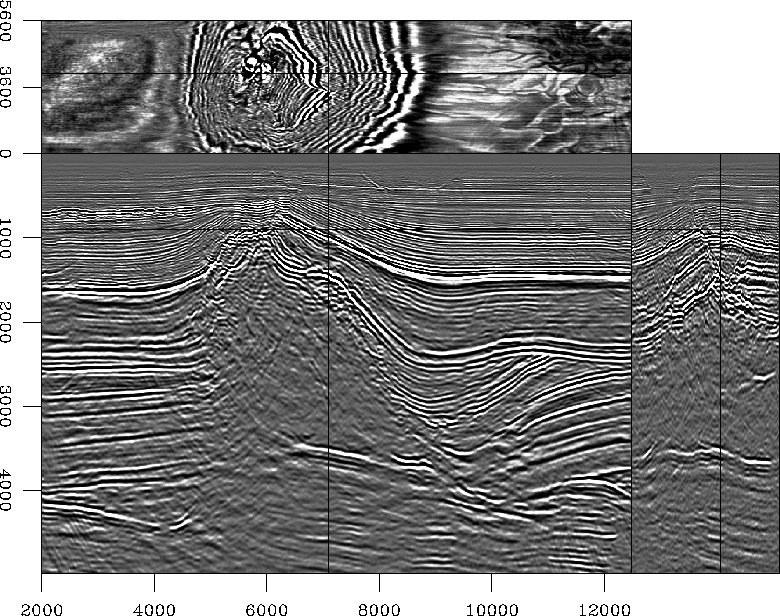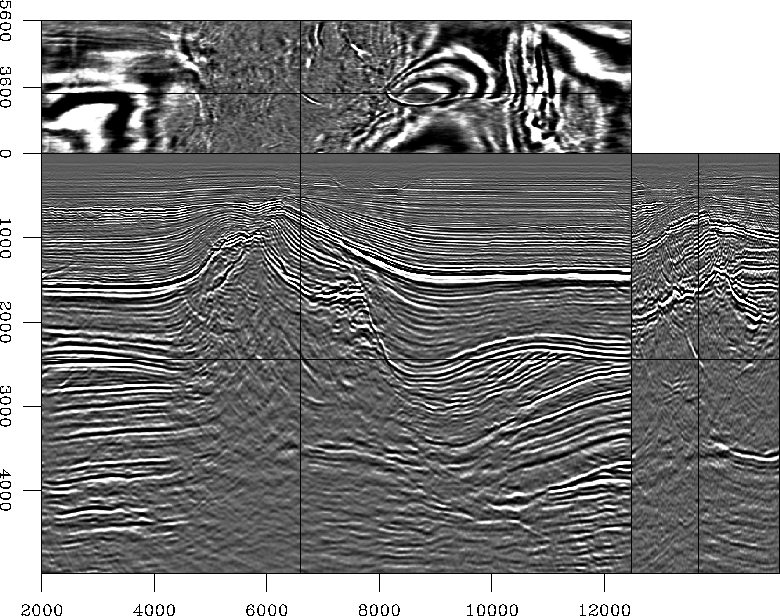The migrated volume covers an area of
![]() km, down to 5km.
The velocity model, courtesy of Elf Aquitaine, was obtained by reflection
tomography using the SMART method Jacobs et al. (1992).
For migration, we used 6 reference velocities and interpolation in an
extended split-step manner. With data
dimensions indicated in Table 1, the 3-D prestack common azimuth
migration ran in 40 days on 4 processors of our SGI Power Challenge
(18 MIPS R8000 processors).
km, down to 5km.
The velocity model, courtesy of Elf Aquitaine, was obtained by reflection
tomography using the SMART method Jacobs et al. (1992).
For migration, we used 6 reference velocities and interpolation in an
extended split-step manner. With data
dimensions indicated in Table 1, the 3-D prestack common azimuth
migration ran in 40 days on 4 processors of our SGI Power Challenge
(18 MIPS R8000 processors).
6|c|Table 1: number of samples
Cmp-X
Cmp-Y
Depth
Offset
Frequencies
Velocities
525
160
400
64
176
6
Figure 1 shows a typical set of sections in the middle of the migrated cube. In the in-line section, the shallower part (above 1500m) reveals high-frequency details accurately imaged: the migration enhanced a graben structure, with normal faults and rotated blocks, around location Cmp-X=8000m, close to the top. The horizontal section at depth 900m highlights complex patterns inside sedimentary layers, imaged with a high resolution, that can be interpreted as turbidite channels. The imaging of the salt body is satisfactory, with sediments clearly bent towards the salt flank on the left-hand side. The salt flank itself has not been well focused, but can be revealed by residual migration Sava (2000). Even with an imperfect velocity model, migration enhances deep layers and most of the bottom of the salt. Several layers below the salt are also well focused.
 |
 |